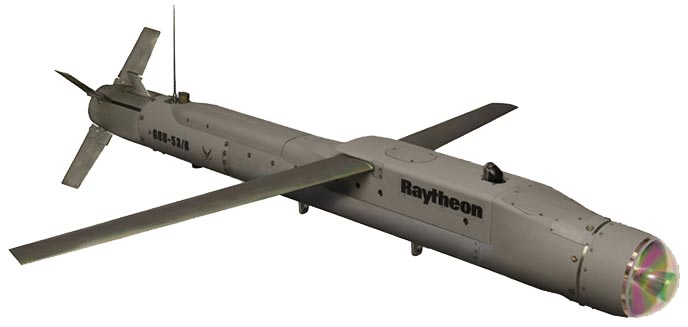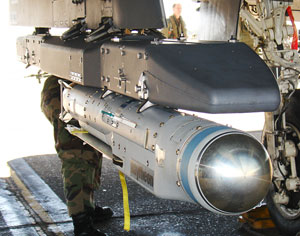
Raytheon Company and the U.S. Air Force concluded a series of test flights with the Small Diameter Bomb II (SDB II) culminating in direct hits on targets moving at operationally representative speeds. SDB II can hit targets from a range of more than 40 nautical miles. It has a powerful warhead capable of destroying armored targets, yet keeps collateral damage to a minimum through a small explosive footprint. It is highly accurate and offers warfighters the flexibility to change targets through a datalink that passes inflight updates to the weapon.
“These successes are the latest in a series of test flights demonstrating Raytheon’s readiness to progress the SDB II program to the System Verification Review and Milestone C,” said John O’Brien, SDB II program director for Raytheon Missile Systems. “These tests showcase the game-changing capability of Raytheon’s tri-mode seeker to detect, track and engage moving targets in adverse weather.”
According to Raytheon, earlier supporting tests were performed in a multitude of different environments and scenarios, key to maturing seeker algorithms and validating the weapon’s aerodynamic performance. “All test flights helped reinforce the system’s capability to satisfy a critical warfighter need.” the announcement said. The Department of Defense has invested more than $700 million in the SDB II program.
Under another test program Raytheon, with the US Navy have recently confirmed testing the capability to guide the newest version of the Joint Standoff Weapon (JSOW) C-1 from an E-2D airborne early warning and control aircraft. The team demonstrated how an F/A-18E/F Super Hornet aircraft, an E-2D Advanced Hawkeye aircraft and the JSOW C-1 can network together for such task.
The test was part of the Navy’s Trident Warrior 2013 demonstration in July. During the demonstration, fighters simulated the launch of a JSOW C-1 while the E-2D directed the weapon toward the positively identified target. The E-2D aircraft also received status updates sent from the JSOW C-1.
“The success of the Trident Warrior 2013 demonstration proves the feasibility of providing the fleet a means of executing the complete kill chain with carrier-based assets utilizing the F/A-18E/F, JSOW C-1 and E-2D to engage maritime targets at range,” said Cmdr. Errol Campbell, the U.S. Navy’s Precision Strike Weapons program office deputy program manager for the JSOW program.
Additionally, the team was able to track and designate a target; simulate the launch of the JSOW; send, receive and acknowledge target updates; and receive bomb hit indication data from the weapon.
“This test further verifies the flexibility and seamless plug-and-play connectivity of JSOW C-1’s network-enabled capability,” said Celeste Mohr, JSOW program director for Raytheon Missile Systems. “The test demonstrates the relative ease with which the U.S. Navy can build on the ongoing integration of the JSOW C-1 on the U.S. Navy’s F/A-18 and expand the interoperability and connectivity to a fielded carrier-capable tactical airborne early warning aircraft.”
In 2009, the Navy performed a similar demonstration of connectivity and interoperability among sensor platforms, a shooting platform and the JSOW C-1 during the Joint Surface Warfare Joint Capability Technology Demonstration. This demonstration involved a P-3 Orion aircraft’s littoral surveillance radar system and an E-8C Joint Surveillance Target Attack Radar System aircraft.


















